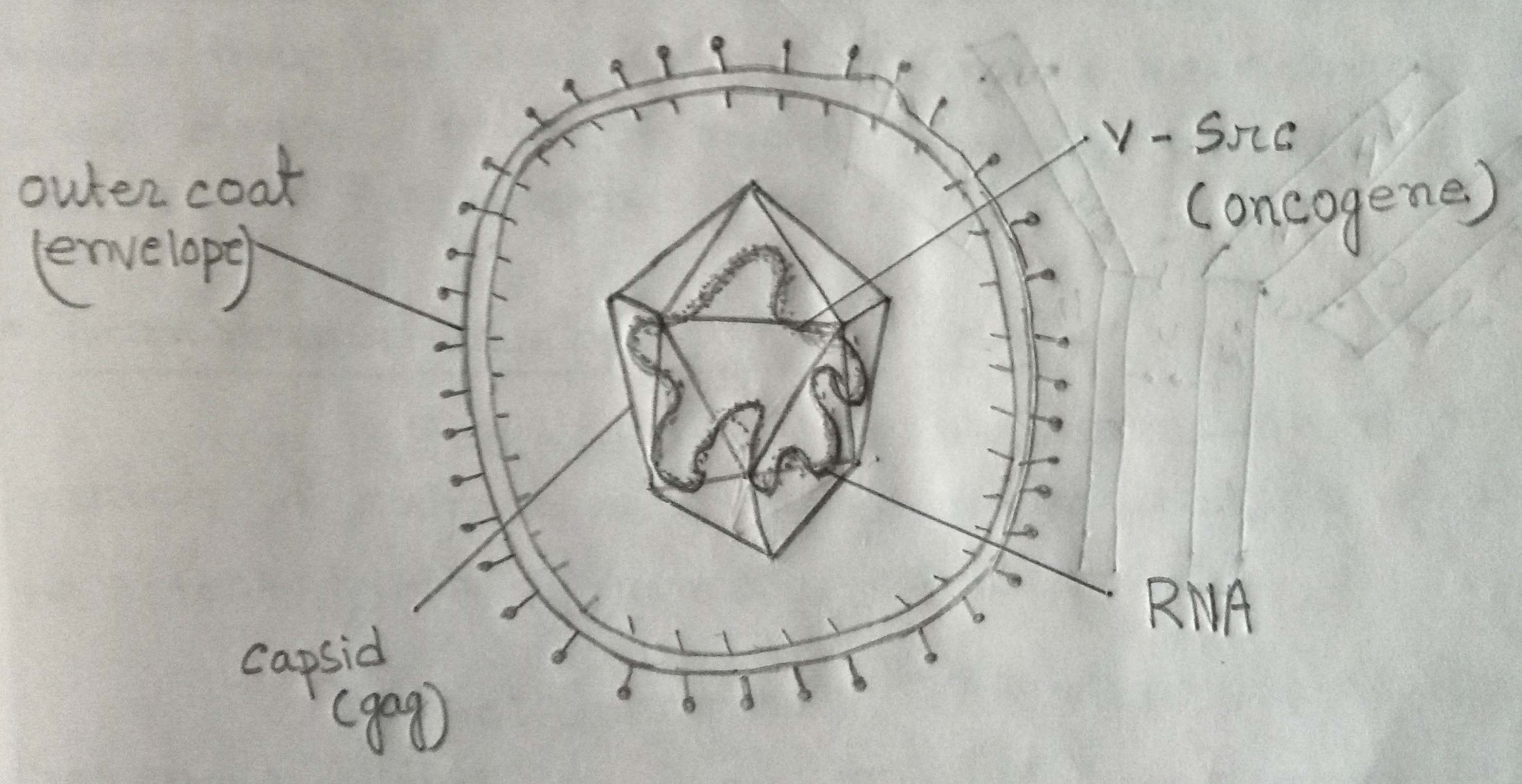Write short notes on Oncogenic viruses and Antigen-antibody reactions
(i) Oncogenic viruses
The existence of a tumor-causing virus named as Rous Sarcoma virus. Retroviruses are the viruses surrounded by an envelope that infects an animal cell. They have single-stranded RNA genome. Two copies of RNA genome are present in each virus particle, that is retroviruses are diploid. A number of viruses containing either DNA or RNA as genetic material are oncogenic, that is tumor-inducing in animals & plants.

Fig: Diagram of an RNA virus.
Cellular transformation caused by DNA & RNA viruses separately:-
Transformation by DNA viruses
Oncogenic DNA viruses consist of three major groups:
(i) Herpes viruses:- Herpes viruses a variety of malignant & nonmalignant disease.
Example: malignant tumors are Burkitt's lymphoma & nasopharyngeal carcinoma in humans.
(ii) Adenoviruses: - Adenoviruses are a group of DNA viruses commonly found in the respiratory tract.
(iii) Papovaviruses:- Papovaviruses are another group of DNA viruses that induce a tumor. HPV genes have been detected in the cancer cells of most women suffering from the cancer of the uterine cervix.
Transformation by RNA viruses
RNA viruses have been linked to a wide variety of animal & plant malignancies as well as to a few types of human cancer.
Example: Oncogenic RNA viruses are Rous Sarcoma virus, human T-cell lymphotropic viruses.
(ii) Antigen-antibody reactions
The antigen-antibody reactions which are of prime importance in immune defense may be categorized into two types: 1. Precipitin Reaction 2. Agglutination reaction
1. Precipitin:- This reaction depends on the ability of antibodies to precipitate soluble antigens in solution. Most antigen molecules pass hydrophilic surface which interacts with the surrounding water molecules resulting in their solubility. Antibodies are also soluble, & when an antibody combines with an antigen, an antigen-antibody complex is formed. An antibody is a bivalent molecule which means that it can combine with two antigens simultaneously. This property enables an antibody to cross-link to more molecules of antigens. This cross-linking essentially result in a network or lattice & as the lattice grows it precipitates out of solution. The ability of antibodies to precipitate soluble antigens is known as precipitin reaction.

2. Agglutination reaction:- Agglutination reaction refers to the ability of the antibody molecules to cause foreign cells to stick together in clumps. IgM class are the first antibodies produced by a clone of differentiated lymphocytes. IgM has ten potential antigen combining sites that are suited for an agglutination reaction. The function of antibodies is to agglutinate or precipitate the antigens. Either one of those two reactions is involved in eliminating antigens which could be soluble toxins released by bacteria responsible for such disease as tetanus or diphtheria or viral particles such as common cold virus or influenza virus or blood borne parasite.